- Home
- John Sandford
The Fool's Run Page 2
The Fool's Run Read online
Page 2
“I could call Jack and ask who your boss is,” I said.
“He wouldn’t tell you,” she said promptly.
“Five thousand?” I’d been rubbing my hands with an old T-shirt, now a paint cloth. She handed me the envelope, absolutely sure of herself.
“In twenties and fifties,” she said. “See you at the airport in an hour?”
“Make it an hour and a half,” I said, giving up. I tucked the money into my hip pocket. “I’ve got to pull the boat out of the water, and make arrangements for the cat . . . take a shower.”
She looked at her watch and nodded. She started to walk away, then changed her mind and turned back to the ruined painting.
“I went to an opening a few weeks ago,” she said. “Oil paintings, though, not watercolors. They had holes cut in the middle of them. Like that one. My friend and I spoke to the artist. He said the holes represented his contempt for the conventional form that has trapped painting for so long. He said the American Indian, for instance, often painted on irregularly shaped war shields. . . .”
It was the kind of talk that gives me headaches.
“Miss, ah, Smith?” I said when she slowed for a breath.
“Yes?”
“If we have to fly to Chicago together, if I take this job, do me a favor?”
“Yes?”
“Don’t talk to me about art, okay?”
Her face froze up. Offended, she looked down at her watch and said, “An hour and a half. Please be prompt.”
She started stiffly across the sandbar toward the willows, but loosened up after a few feet, and even gave it a little extra effort, knowing I’d watch. Which I did. At the base of the levee she stopped to put on her shoes, glanced back, and nimbly climbed the bank.
I keep a pair of 8 x 50 binoculars in the boat, so I can get a closer look at landscape structures. When she disappeared over the levee, I got the glasses and jogged after her. A car door slammed as I scrambled up the levee and put the glasses on her car’s license plate. It was a Minnesota tag, probably a rental. Back at the boat, I wrote the number on the cash envelope with a nice vibrant black made of alizarin crimson and hooker’s green.
Then I went off to call Robert Duchamps, pronounced Doosham, and usually called Bobby.
Chapter 2
THE CAT, A tiger-striped tom, had moved in a few months after I bought the apartment. He was waiting now on the back of the living room couch, gazing out the window toward the river. He was doing the same thing one day when a pigeon, one of the big blue and white numbers, smacked headlong into the glass. He came off the couch like a bullet and hid under the kitchen sink for the rest of the day. He hasn’t trusted a pigeon since.
“I’m going out of town,” I told him. “I’ll leave the flap open. Emily will feed you.” He looked at me, yawned, and turned back to the window.
Emily Anderson lives in the apartment below mine. She’s seventy years old and a damn good painter. Most Wednesday nights we hire a model and drink beer and draw and argue. I walked down the stairs and knocked on her door. When she answered, I told her about the trip. She agreed to take care of the cat.
“Though you ought to pay me for taking care of the smelly thing.”
“Jesus Christ, you drink enough of my beer to float a battleship,” I said.
“Yeah, and make sure there’s a six-pack in the fridge,” she said as she shut her door. We get along famously.
I live in a sprawling apartment in the northeast corner of a converted red-brick warehouse, four floors up. The painting studio is on the north side, under a lot of glass. There’s also a study, a small living room that looks east toward the rail-yards and river, a tiny kitchen with a dining bar, and one bedroom.
Most of my time is spent in the studio or the study, which is dominated by three walls of books and a bunch of personal computers. There’s an IBM-AT that’s been collecting dust lately, one of the IBM PS/2s, a Mac II, and my favorite, a full-bore Amiga 2000. A Lee Data dumb terminal is stuffed under a book table next to an early vintage Mac. A few old-timers from Commodore, Radio Shack, and Apple sit in boxes in a corner with power cords wrapped around their disk drives. I work on the big machines when I need money, but prefer the small ones. Power to the people.
I turned on the Amiga, loaded a communications program, and typed in Bobby Duchamps’s phone number in East St. Louis.
Bobby lives in the phone wires. We met one night in the late seventies, by accident, deep inside the General Motors design computers. We had a nice chat, and he gave me a number in Chicago. The number didn’t exist as an independent phone line, but it triggered an intercept. Bobby was a phone phreak before he started hacking.
Bobby specializes in databases. He’s deep into Arpanet and Milnet and BNeT and a half dozen other international and intercontinental data networks. He knows the credit company computers like the back of his hand. If you need something from a phone-wired database, chances are he can get it.
Other than that, I didn’t know much about him. I was down in New Orleans once and hadn’t hooked up my portable, and he called me on a voice line. He sounded like one of those soft-spoken Delta blacks, in his teens or twenties. He had a speech impediment, and hinted that he had a physical problem. Cerebral palsy, something like that.
Since then I’ve called him at half a dozen different numbers in the biggest metro areas east of the Mississippi. I don’t know whether he actually moved or somehow changed area codes. You can get him personally, twenty-four hours a day, if you know how.
The East St. Louis number rang without an answer. I counted the rings to eight, and pressed the “a” key before the ninth ring. It rang twice more, and then the carrier tone came up. If I hadn’t pressed an “a” between eight and nine, it’d have rung forever.
After another moment, a ? came up on my screen, and I typed in a pseudonym. After another moment, a WHAT? appeared.
I typed, need info 45 minutes max on driver rental car (unknown agency but probably from St. Paul Muni) XDB-471 white Ford.
It sat there on the screen for a moment before he came back with $ 50, his price for the information.
I typed OK and he came back with LEAVE ON RECEIVE. I typed OK again and a second later the modem signaled a disconnect. I switched the modem to auto-answer and hung up.
Bobby doesn’t take cash. His patrons sign up with SciNet, a science-oriented data-processing service, and give Bobby their account numbers and passwords. He uses their time, up to an agreed amount. He never cheats. I have no idea what he’s using SciNet’s mainframes for. It might be a money-laundering shuck of some kind.
While Bobby looked for data on the blonde, I showered and brushed my teeth.
As I was brushing, I stared at myself in the mirror, something that I seem to do more and more often as the years go by. Searching for signs of immortality, finding signs of erosion; the lines on either side of my nose get deeper and my hair is shot through with gray, which I like to pretend is premature.
I thought about growing a mustache again, but the last time I tried, the experiment ended in embarrassment. A woman friend was teasing me about the new growth, saying I reminded her of someone. But who? I modestly mentioned a few movie stars, and she started laughing. Things were moving right along until halfway through the evening, when her forehead wrinkled and she pointed her index finger at the brush above my mouth. “I got it. Mark Twain!”
Mark Twain was a wonderful guy, but in the picture everybody remembers, he was thirty years older than I am. Twenty, anyway. I lost the mustache.
When I finished brushing, I changed into a clean pair of jeans, a blue oxford-cloth shirt, and a fading linen sport coat. Then I went out to the kitchen, opened a can of chicken feast for the cat, and unlocked the flap so he could come and go. I was stuffing underwear and a couple of clean shirts into an overnight bag when Bobby called back. The computer answered, and data began running down the screen.
Margaret Ellise Kahn, dob 2/18/52, 80023 Indian, Evanston, Ill.,
eyes green, height 5’9, weight 135, no corrective lenses, registered owner silver-gray Porsche 911. Speeding tickets September 120 in 55 zone paid $150 fine; charged 112 in 55 November dismissed; charged 114 in 55 April dismissed; employed Anshiser Holding Corp. Chicago-Los Angeles personal sec Rudolph S. Anshiser; reported income $297,000 last year’s fed return; credit ratings AAA all services; bank balances $15,000 checking, $268,000 CDs and passbook; accounts with Merrill Lynch amounts unknown; Cook county court shows divorce Margaret Ellise Kahn Harcourt from John Miller Harcourt prof. U. Chicago economics, 2-24-80, shows no Cook County marriage license; Margaret Ellise Kahn grad U. Chicago economics BA 1974 MA 75 Ph.D. 78. Personal sec. Anshiser 1980-present . . . can print full divorce proceeding, full credit reports?
I typed back, No.
Much more around, if need more; lots of files & leads.
No thanx, may call back. Going Chicago, will take portable. Plenty credit SciNet, talk to you later.
Later.
The screen flashed disconnect. I sent the data to the printer, ripped off the sheet that burped out, stuck it in my coat pocket, and shut the system down.
The first part of Bobby’s information came from a driver’s license record. He’s into the car rental agencies’ data banks, and he got the license and credit card numbers there. Once he had those, he was on his way. Credit records, government records, Social Security—they’re all open books, if you have the right opener.
He’d given me something to think about. Anshiser was serious money: a billion or two. if The Wall Street Journal knows what it’s talking about.
I subscribe to twenty-five or thirty magazines and newsletters that touch on my work, everything from Artnews and Byte to PC World and Vector Reports. Any issues of particular interest get tossed in a closet. If I wasn’t mistaken, Business Week, sometime in the past year, had done a profile of Anshiser and his businesses. I opened the closet and started sorting through the accumulation of paper. I found it six months down.
Anshiser, according to Business Week, directly controlled Anshiser Holding Corporation, which in turn owned a dozen major companies. On the industrial side was Anshiser Aviation, where he got his start during World War II, building up a company bought by his father during the Depression. There was also an avionics company, a small aluminum specialties mill, and a string of scrap yards. The holdings on the service side, where Anshiser had been most active in the past twenty years, were even more impressive. They included a hotel chain, two franchise restaurant chains, one of the nation’s biggest garbage-hauling firms, and Kelmark Vending, a building and distributor of candy- and cigarette-machines, coin-op pool tables, and similar equipment.
Anshiser was known for his willingness to take risks and to delegate authority. If he gave you a company to run, and you ran it well, he made you rich and kept his hands off. Executives who failed to measure up were ruthlessly weeded out.
He was also a force in Republican politics, particularly in the upper Midwest. And that, I thought, was where he got my name. Most of my political money is Republican. That has nothing to do with personal preferences. The Republicans simply have more cash. As far as I’m concerned, the two parties are about as different as Curly and Moe.
Before leaving the apartment, I stepped into the studio and sat down at the drawing table. I keep a tarot at hand, wrapped in silk in a wooden box from Poland. The deck is a common one, a popular variation of the Ryder design. I did five quick spreads, and the Fool showed up in critical positions in three of them. The Fool represents a major change that occurs as a natural and inexorable part of life, without your volition, because of the way you live. I wrapped the cards in the silk cloth, put them back in the box, and slipped the box into my overnight bag. Something to consider.
THE MUNICIPAL AIRPORT from my apartment is across the Robert Street Bridge, down onto the flats along the river. Kahn was waiting for me in the terminal, smiled perfunctorily when she saw me coming with the bag and the portable, and headed out the door.
“We’re right out here,” she said over her shoulder.
It was a red-and-white Anshiser-built business jet with a charter logo. I hate traveling on small jets. You feel like you’re in a mailing tube. The pilot and copilot were already in the cockpit.
“I’m surprised it’s a charter,” I said. “I’d have thought you’d fly it yourself, Margaret. Like you fly the Porsche.”
She turned her head and looked at me. Her eyes unfocused a bit, and before we got to the waiting plane, she said, “The rental car. You got the license number.”
“Very good,” I said. The data said she was smart. The data were right.
“You’ve got a friend at the rental booth. The redhead?” she asked as we stopped at the steps to the plane.
“No. Database. The redhead wouldn’t know about the Porsche.” I gave her my best smile.
Her forehead wrinkled. “So you know who my employer is?”
“Rudolph Anshiser.”
“Hmph,” she said, and led the way to the jet. At the top of the stairs she turned and said, “It’s not Margaret. It’s Maggie.”
Chapter 3
IN WHAT SEEMS like another century, I was a first lieutenant in the U.S. Army. The unit was small, and eventually all but four of us were dead or in pieces. I lay in an Army hospital in San Francisco, tried to rationalize my part in the deaths, and failed. Since then, I’ve had an aversion to organization. For the most part, I simply want to be left alone. That’s not as simple as it should be.
I paint during the days, and late at night I sit in front of a computer terminal and make statistical models. In the early evenings, there are workouts at the Shotokan dojo on East Seventh Street.
I like my cat, a couple of women in town, fifteen or twenty Twins ball games a year, fishing out of Miami in the winter and on a Canadian lake in the summer, and the music and food in New Orleans. I go to New York and Chicago for gallery openings and to hustle my paintings.
It all takes money. Only a small fraction of my earnings comes from painting, but the fraction is getting larger. A bigger chunk comes from the computer models. The models predict political behavior, using social statistics, a cynic’s view of history, and a variety of small computers. If you want to be a state legislator, governor, congressman, or U.S. senator from Wisconsin, Minnesota, or several other states of the upper Midwest, you can buy a Kidd election model and run it on your own IBM office machine. You crank in a political position, and out comes a result in terms of vote shifts. If you don’t like the answer, you can crank in a different position. A model like that will cost five to twenty grand, depending on how rich you are.
Sometimes, especially in political off-years, I take less conventional computer-related jobs. They pay the best of all.
I TOLD MOST of this to Rudolph Anshiser himself three hours after Maggie and I flew out of St. Paul. We were met at the O’Hare general aviation terminal by a gray Mercedes limousine. The chauffeur wore a blue pinstriped shirt and rep tie. He looked like he might own a company or two himself.
We drove north and east out of O’Hare. Forty-five minutes after we left the airport, the chauffeur turned off the arterial highway into a four-lane street through an expensive neighborhood. It may have been Evanston, but may also have been a bit farther north. Eventually we left the four-lane street for a two-lane through an even more expensive neighborhood, and finally turned onto a blacktopped lane that twisted and turned past gated entries and vine-covered walls. We stopped at a brick gatehouse with wrought-iron gates. The chauffeur pressed a button on the car’s dashboard, and the gates rolled open.
Behind them were two acres of crisply landscaped grounds dotted with oak, ash, and the distinct forms of gingko trees. Here and there were the stumps of departed American elms. The house, a pile of ivy-covered brick, covered another quarter acre. Lake Michigan broke against a seawall in back.
The chauffeur stopped at the arched front entry, and Maggie led me across a red quarry-tile porch, th
rough a dimly lit, walnut-paneled entry hall and into an old-fashioned parlor. She pointed at an overstuffed chair.
“I have to report. We’ll have you up in five minutes,” she said.
She left, and I sat down and looked around the room. It had the peculiar stillness that comes with a lack of living-in. It was a waiting room, but few people waited in it. There was a blocked-up fireplace, flanked on both sides by bookshelves loaded with obsolete business texts. Another wall featured a narrow window with heavy brocade drapes drawn back to show a thin slice of green lawn. Little, sparkly dust motes glimmered in the shaft of sunlight that came through.
A German Romantic oil painting hung over the fireplace, and my eye kept skipping over it. From the corner, beside the bookshelves, a much smaller painting made noises at me. I finally heaved myself out of the chair and went over to look at it. Then I got down in front of it.
Damn. A Whistler. One of the pastels from Venice. A street scene with strollers and a garbage-eating dog. The buildings, outlined in black chalk on gray-toned paper, leaned out over the crowd, and were brought to life with a few simple touches of color. In the lower left-hand corner was his butterfly signature. I’d never seen it before, not the real thing. The painting was hung five feet off the floor and I was practically down on my knees peering at it. The light was terrible. I didn’t hear Maggie come back.
“Like it?”
I jumped and turned.
“Jesus. This is a Whistler.”
“Uhh-huh.” She was not interested.
“Yeah. I like it.” I went back to it. How did he make it so real, with so few lines and so little color? I looked at it until Maggie started fidgeting.
“Okay,” I said, and followed her out of the parlor and up a curving walnut staircase to the second floor. A long, carpeted corridor crossed the stairs at the top, running both ways the full length of the house. We turned left, past bedrooms now converted to offices. There were people in some of the offices, working over computer screens or stacks of paper. They didn’t look up as we passed. Halfway down the hall, Maggie knocked at a heavy oak door and went through.

 Field of Prey
Field of Prey The Best American Mystery Stories 2017
The Best American Mystery Stories 2017 Mad River
Mad River Storm Front
Storm Front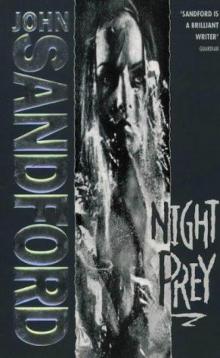 Night Prey
Night Prey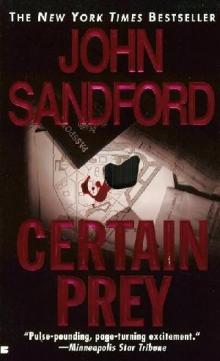 Certain Prey
Certain Prey Heat Lightning
Heat Lightning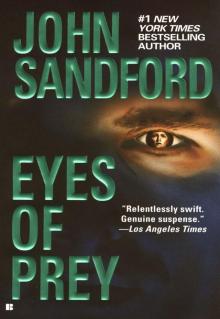 Eyes of Prey
Eyes of Prey Golden Prey
Golden Prey Lucas Davenport Novels 6-10
Lucas Davenport Novels 6-10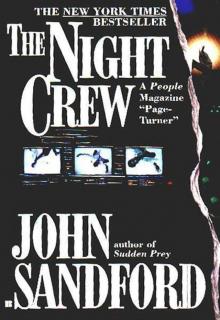 The Night Crew
The Night Crew Broken Prey
Broken Prey Mortal Prey
Mortal Prey Dark of the Moon
Dark of the Moon Twisted Prey
Twisted Prey Stolen Prey
Stolen Prey Deadline
Deadline Secret Prey
Secret Prey Rules of Prey
Rules of Prey Extreme Prey
Extreme Prey Bad Blood
Bad Blood Gathering Prey
Gathering Prey Rough Country
Rough Country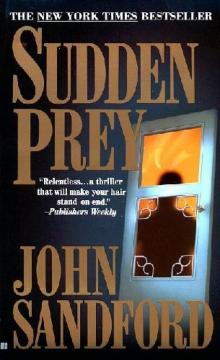 Sudden Prey
Sudden Prey Silken Prey
Silken Prey Buried Prey
Buried Prey Invisible Prey
Invisible Prey Silent Prey
Silent Prey Deep Freeze
Deep Freeze Bloody Genius
Bloody Genius Naked Prey
Naked Prey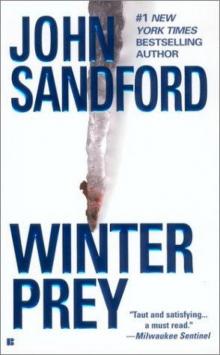 Winter Prey
Winter Prey Dead Watch
Dead Watch Escape Clause
Escape Clause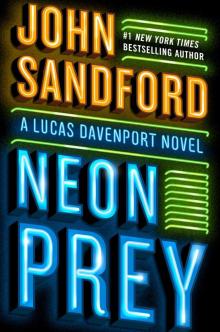 Neon Prey
Neon Prey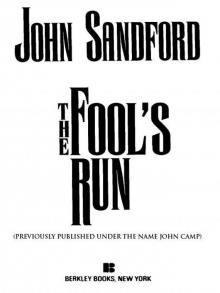 The Fool's Run
The Fool's Run Mind Prey
Mind Prey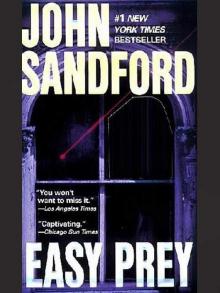 Easy Prey
Easy Prey The Devil's Code
The Devil's Code Chosen Prey
Chosen Prey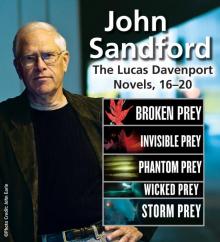 The Lucas Davenport Collection, Books 11-15
The Lucas Davenport Collection, Books 11-15 Shock Wave
Shock Wave Shadow Prey
Shadow Prey Naked Prey ld-14
Naked Prey ld-14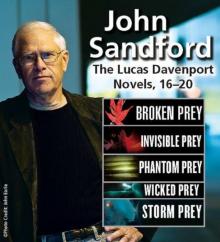 Lucas Davenport Novels 16-20
Lucas Davenport Novels 16-20 Invisible prey ld-17
Invisible prey ld-17 Lucas Davenport Collection: Books 11-15
Lucas Davenport Collection: Books 11-15 Masked Prey
Masked Prey![[Prey 11] - Easy Prey Read online](http://i1.bookreadfree.com/i/03/22/prey_11_-_easy_prey_preview.jpg) [Prey 11] - Easy Prey
[Prey 11] - Easy Prey Silent Prey ld-4
Silent Prey ld-4 Storm prey ld-20
Storm prey ld-20 Eyes of Prey ld-3
Eyes of Prey ld-3 Certain prey ld-10
Certain prey ld-10 Lucas Davenport Collection
Lucas Davenport Collection Sudden prey ld-8
Sudden prey ld-8 Kidd and LuEllen: Novels 1-4
Kidd and LuEllen: Novels 1-4 Silken Prey ld-23
Silken Prey ld-23 Mad River vf-6
Mad River vf-6 Bad blood vf-4
Bad blood vf-4 Broken Prey ld-16
Broken Prey ld-16 Stolen Prey p-22
Stolen Prey p-22 Night Prey ld-6
Night Prey ld-6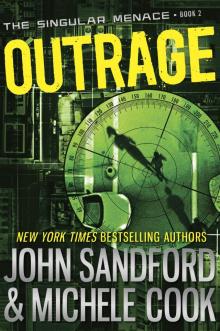 Outrage
Outrage Mind prey ld-7
Mind prey ld-7 Shock Wave vf-5
Shock Wave vf-5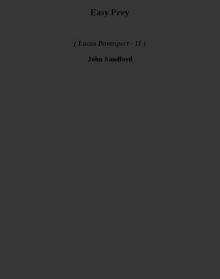 Easy Prey ld-11
Easy Prey ld-11 Prey 7 - Mind Prey
Prey 7 - Mind Prey Winter Prey ld-5
Winter Prey ld-5 Holy Ghost
Holy Ghost Uncaged
Uncaged Rampage
Rampage Hidden Prey ld-15
Hidden Prey ld-15 Buried Prey p-21
Buried Prey p-21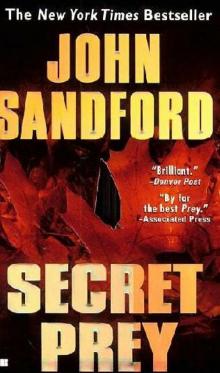 Secret Prey ld-9
Secret Prey ld-9 Chosen Prey ld-12
Chosen Prey ld-12 Phantom prey ld-18
Phantom prey ld-18 Mortal Prey ld-13
Mortal Prey ld-13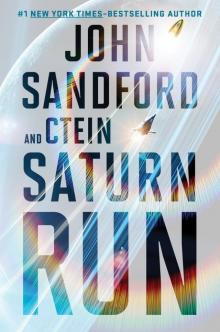 Saturn Run
Saturn Run Wicked Prey
Wicked Prey The Hanged Man’s Song
The Hanged Man’s Song Rough country vf-3
Rough country vf-3 Prey 25 - Gathering Prey
Prey 25 - Gathering Prey